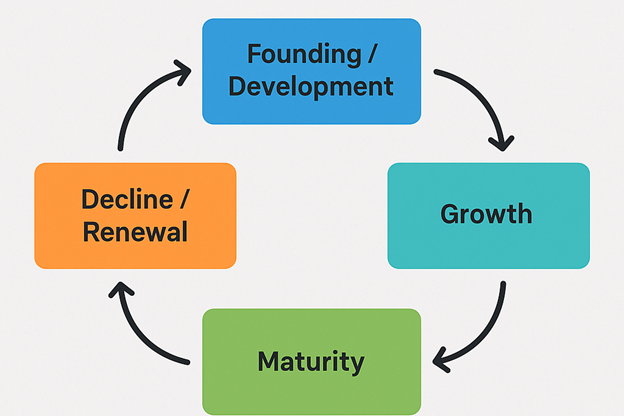Offerte esclusive per i giochi di blackjack su LeoVegas Casino Bonus. revisto com destaque
Table of Contents
- Le migliori offerte di blackjack su LeoVegas
- Tipologie di bonus disponibili per il blackjack
- Come funzionano i bonus sul blackjack
- Strategie per massimizzare i bonus sul blackjack
- Confronto tra le offerte di blackjack su LeoVegas
- Il blackjack dal vivo su LeoVegas: un’esperienza unica
- Assistenza clienti e promozioni dedicate
- Termini e condizioni dei bonus di blackjack
- Testimonianze e recensioni degli utenti su LeoVegas
- Conclusioni sulle offerte di blackjack su LeoVegas
Le migliori offerte di blackjack su LeoVegas
LeoVegas Casino è noto per le sue eccezionali offerte di blackjack, che attraggono sia i neofiti che i giocatori esperti. Uno dei punti di forza di LeoVegas è la varietà di promozioni che offre, che possono includere bonus di benvenuto, cashback e tornei esclusivi. Ad esempio, i nuovi giocatori possono ricevere un bonus del 100% sul primo deposito fino a una certa cifra, che permette di aumentare il bankroll e di esplorare i vari tavoli di blackjack disponibili.
In aggiunta, LeoVegas organizza regolarmente promozioni stagionali e offerte a tempo limitato, che incoraggiano i giocatori a tornare e provare nuove varianti del blackjack. Queste offerte possono includere giri gratuiti su slot collegate a eventi speciali, rendendo l’esperienza di gioco ancora più coinvolgente. Oltre ai bonus, LeoVegas offre anche una piattaforma intuitiva e sicura, che rende facile navigare tra le varie opzioni di gioco.
Tipologie di bonus disponibili per il blackjack
Quando si tratta di bonus per il blackjack su LeoVegas, le tipologie disponibili variano notevolmente. I bonus di benvenuto sono tra i più comuni e possono includere una corrispondenza sui depositi o giri gratuiti. Tuttavia, ci sono anche bonus senza deposito che permettono di provare il blackjack senza rischiare fondi propri. Questi bonus sono particolarmente attraenti per i nuovi giocatori, poiché consentono di familiarizzare con il gioco e la piattaforma.
Altre offerte includono bonus di ricarica, che incentivano i giocatori a effettuare ulteriori depositi dopo il primo. LeoVegas offre anche cashback settimanali, che restituiscono una percentuale delle perdite subite dai giocatori nel corso della settimana. Questa tipologia di bonus è ideale per chi gioca frequentemente, in quanto fornisce un ulteriore cuscinetto finanziario. Infine, i tornei di blackjack offrono premi in denaro o altri incentivi per i migliori giocatori, creando un ambiente competitivo e stimolante.
Come funzionano i bonus sul blackjack
I bonus sul blackjack di LeoVegas sono progettati per incentivare i giocatori e migliorare l’esperienza di gioco. Per usufruire di un bonus, i giocatori devono generalmente registrarsi su LeoVegas e fare un deposito. Una volta completato questo passaggio, il bonus viene accreditato sul loro conto. Tuttavia, è fondamentale leggere i termini e le condizioni associate a ciascun bonus, poiché potrebbero esserci requisiti di scommessa che devono essere soddisfatti prima di poter prelevare le vincite.
Ad esempio, un bonus di benvenuto potrebbe richiedere che il giocatore scommetta un certo importo prima di poter ritirare i fondi. Questo significa che, se un giocatore riceve un bonus di 100 euro, potrebbe dover scommettere un totale di 1.000 euro per sbloccare il bonus. Questo sistema di requisiti di scommessa è comune nei casinò online e serve a garantire che i giocatori partecipino attivamente ai giochi prima di poter accedere ai fondi bonus.
Strategie per massimizzare i bonus sul blackjack
Massimizzare i bonus sul blackjack richiede una pianificazione strategica e una comprensione approfondita del gioco. Una delle strategie più efficaci è approfittare dei bonus di benvenuto e dei bonus senza deposito. Utilizzando questi bonus in modo oculato, i giocatori possono testare diverse varianti di blackjack e trovare quelle che meglio si adattano al loro stile di gioco. È consigliabile iniziare con scommesse più basse per allungare il bankroll e aumentare le possibilità di vincita.
Un’altra strategia utile è quella di concentrarsi su tavoli con condizioni di scommessa favorevoli. Alcuni tavoli di blackjack offrono pagamenti migliori o regole più vantaggiose rispetto ad altri. Ad esempio, cercare tavoli che offrono un pagamento di 3:2 per il blackjack invece di 6:5 può fare una grande differenza nel lungo termine. Inoltre, i giocatori dovrebbero sempre tenere d’occhio le promozioni temporanee e i tornei, poiché possono offrire opportunità uniche per guadagnare bonus extra e premi.
Confronto tra le offerte di blackjack su LeoVegas
Quando si confrontano le offerte di blackjack su LeoVegas, è importante considerare diversi fattori, tra cui l’ammontare del bonus, i requisiti di scommessa e le varianti di blackjack disponibili. LeoVegas offre una gamma di giochi, tra cui blackjack classico, blackjack dal vivo e varianti come il blackjack europeo e il blackjack americano. Ogni gioco presenta diverse regole e strategie, rendendo fondamentale scegliere quello più adatto alle proprie preferenze.
Inoltre, l’ammontare del bonus e i requisiti di scommessa possono variare significativamente. Alcuni bonus possono sembrare allettanti inizialmente, ma se i requisiti di scommessa sono troppo alti, potrebbero non essere vantaggiosi. È utile utilizzare un foglio di calcolo o una tabella per confrontare le diverse offerte in modo da avere una visione chiara di quale sia la più vantaggiosa. Ecco una tabella di confronto esemplificativa:
| Tipo di Bonus | Ammontare | Requisiti di Scommessa | Valido per |
|---|---|---|---|
| Bonus di Benvenuto | 100% fino a 200€ | 30x | Blackjack e altre slot |
| Bonus Senza Deposito | 10€ | 40x | Blackjack classico |
| Cashback Settimanale | 10% fino a 100€ | Nessun requisito | Tutti i giochi |
Il blackjack dal vivo su LeoVegas: un’esperienza unica
Il blackjack dal vivo rappresenta un’esperienza di gioco coinvolgente che porta l’atmosfera del casinò direttamente a casa tua. Su LeoVegas, i giocatori possono divertirsi con il blackjack dal vivo, dove i croupier in carne e ossa interagiscono con i giocatori attraverso video in streaming di alta qualità. Questa modalità di gioco offre un’esperienza autentica, con la possibilità di comunicare con il croupier e gli altri giocatori, rendendo il gioco più sociale e interattivo.
LeoVegas offre diverse varianti di blackjack dal vivo, ognuna con regole e limiti di scommessa diversi. I giocatori possono scegliere tra tavoli con limiti di scommessa bassi, ideali per chi è alle prime armi, e tavoli ad alta scommessa per i giocatori più esperti che cercano di massimizzare le loro vincite. Inoltre, le promozioni dedicate ai giochi dal vivo possono includere bonus esclusivi, rendendo l’esperienza di gioco ancora più interessante.
Assistenza clienti e promozioni dedicate
Un altro aspetto fondamentale delle offerte di blackjack su LeoVegas è l’assistenza clienti disponibile. LeoVegas si impegna a fornire un servizio clienti di alta qualità, accessibile tramite chat dal vivo, email e telefono. Gli operatori sono disponibili per rispondere a qualsiasi domanda riguardante i bonus, le promozioni e il gioco in generale. Questo supporto è essenziale, soprattutto per i nuovi giocatori che potrebbero avere dubbi su come utilizzare i bonus o su come funzionano le diverse varianti di blackjack.
Inoltre, LeoVegas offre promozioni dedicate, che possono includere eventi speciali o tornei esclusivi per i giocatori di blackjack. Queste promozioni possono fornire opportunità uniche per guadagnare premi extra e migliorare l’esperienza di gioco. È consigliabile iscriversi alla newsletter di LeoVegas o seguire le loro pagine sui social media per rimanere aggiornati sulle ultime promozioni e offerte esclusive.
Termini e condizioni dei bonus di blackjack
È fondamentale prestare attenzione ai termini e alle condizioni associate ai bonus di blackjack su LeoVegas. Ogni offerta ha requisiti specifici che devono essere rispettati per poter prelevare le vincite ottenute con i fondi bonus. Questi requisiti possono includere limiti temporali, come scadenze per completare le scommesse, e restrizioni sui giochi che possono contribuire all’adempimento dei requisiti.
Ad esempio, non tutti i giochi di blackjack possono contribuire allo stesso modo ai requisiti di scommessa. Alcuni giochi potrebbero contribuire solo parzialmente o non contribuire affatto. È importante leggere attentamente i termini e le condizioni prima di accettare un bonus per evitare sorprese sgradite. Inoltre, è consigliabile tenere un registro delle scommesse effettuate per monitorare il progresso verso il completamento dei requisiti di scommessa.
Testimonianze e recensioni degli utenti su LeoVegas
Le recensioni degli utenti sono un ottimo modo per avere un’idea delle esperienze di gioco su LeoVegas, in particolare per quanto riguarda le offerte di blackjack. Molti giocatori lodano la varietà di giochi disponibili e la qualità del supporto clienti. Le testimonianze positive spesso evidenziano quanto sia facile navigare sulla piattaforma e come le promozioni siano vantaggiose.
Tuttavia, è importante considerare anche le recensioni negative, che possono fornire informazioni preziose su potenziali problemi. Alcuni utenti potrebbero segnalare difficoltà nel soddisfare i requisiti di scommessa o esperienze negative con il prelievo delle vincite. Leggere una varietà di recensioni può aiutare i giocatori a formarsi un’opinione equilibrata e a prendere decisioni più informate riguardo alle offerte di blackjack su LeoVegas.
Conclusioni sulle offerte di blackjack su LeoVegas
In sintesi, LeoVegas offre una gamma di offerte esclusive per il blackjack che possono migliorare notevolmente l’esperienza di gioco. Con bonus di benvenuto, cashback e tornei, i giocatori hanno molte opportunità per massimizzare le loro vincite. È fondamentale comprendere i termini e le condizioni associate a ciascun bonus e adottare strategie di gioco efficaci per sfruttare al meglio queste offerte.
Inoltre, l’assistenza clienti e le promozioni dedicate contribuiscono a creare un ambiente di gioco positivo e coinvolgente. I giocatori dovrebbero approfittare delle varie risorse disponibili, come le recensioni e le testimonianze, per informarsi e fare scelte consapevoli. Con una pianificazione attenta e una buona comprensione delle offerte, i giocatori possono godere di un’esperienza di blackjack emozionante e potenzialmente redditizia su LeoVegas.



